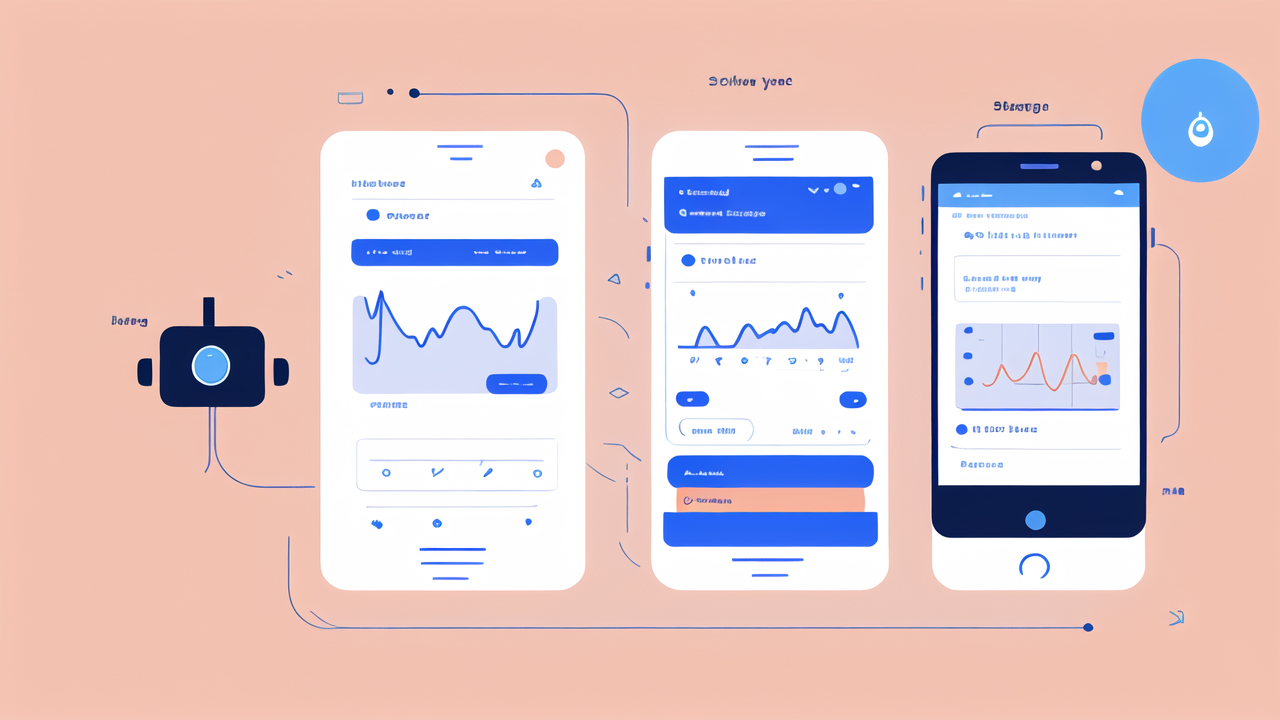The Evolution of Smart Watches: Tracing the Journey of Wearable Technology
The inception of smart watches: From concept to consumer
Smart watches have come a long way since their inception. The idea of wearable tech dates back to the 1970s. However, it wasn't until the 2010s that smart watches became mainstream consumer products.

Early models were basic. They could tell time and perform simple calculations. Today's smart watches are mini-computers on your wrist. They can track health metrics, make calls, and even control your smart home devices.
The journey from concept to consumer product was not easy. It required advancements in battery tech, display tech, and miniaturization. The result? A device that's now an integral part of many people's daily lives.
Key technological advancements shaping smart watches today
Several key advancements have shaped modern smart watches:
- Improved sensors: These allow for more accurate health tracking.
- Better displays: OLED screens offer vibrant colors and lower power consumption.
- Faster processors: This enables smoother performance and more complex apps.
- Improved connectivity: 4G and 5G support allow standalone functionality.
- Enhanced battery life: New tech allows watches to last days on a single charge.
These advancements have transformed smart watches from novelty items to essential tools. They now offer features that were once the realm of science fiction.
The impact of AI and Machine Learning on smart watches
AI and Machine Learning have revolutionized smart watches. These technologies enable:
- Personalized health insights: AI analyzes your data to provide tailored advice.
- Predictive text: ML improves text input on small screens.
- Voice assistants: AI powers more natural and helpful voice interactions.
- Anomaly detection: ML can spot unusual patterns in your health data.
- Adaptive battery management: AI optimizes battery use based on your habits.
These features make smart watches more intuitive and useful. They're no longer just passive devices, but active assistants on your wrist.
Cutting-Edge Features in Today's Smart Watches
Health and wellness metrics: Empowering users with personalized data
Modern smart watches are powerful health tools. They offer a wide range of health and wellness metrics:

- Heart rate monitoring: Continuous tracking for better heart health awareness.
- ECG: Some watches can take electrocardiograms to detect heart irregularities.
- Blood oxygen levels: Useful for fitness and overall health monitoring.
- Sleep tracking: Detailed analysis of sleep patterns and quality.
- Stress monitoring: Using heart rate variability to gauge stress levels.
- Menstrual cycle tracking: Helping women understand their bodies better.
These features provide users with a wealth of personal health data. This empowers them to make informed decisions about their lifestyle and seek medical advice when needed.
Smart watches are becoming integral to preventive healthcare. They can spot potential issues before they become serious problems.
Integrating smart home devices: The role of IoT
Smart watches are becoming central hubs for IoT (Internet of Things) devices. They can control:
- Smart lights: Adjust brightness and color with a tap on your wrist.
- Thermostats: Change home temperature without reaching for your phone.
- Security systems: Arm or disarm your home security from your watch.
- Smart appliances: Start your coffee maker or check your fridge inventory.
- Entertainment systems: Control your TV or music playback.
This integration makes smart homes more accessible and convenient. Your smart watch becomes a universal remote for your entire home.
The role of IoT in smart watches is still evolving. We can expect even more integration in the future.
Battery life and performance: Balancing power with functionality
Battery life remains a key challenge for smart watch makers. They must balance power-hungry features with the need for all-day use.
Recent advancements include:
- More efficient processors: These use less power while delivering better performance.
- Improved battery technology: New materials allow for higher capacity in small sizes.
- Smart power management: AI-driven systems that optimize battery use.
- Low-power display tech: Always-on displays that use minimal power.
- Fast charging: Some watches can gain a full day's charge in just 30 minutes.
Despite these improvements, battery life remains a top concern for consumers. Manufacturers continue to innovate in this area.
The goal is to create watches that can last for days or even weeks on a single charge. This would make them even more useful for continuous health monitoring.
The Future Landscape of Smart Watches in the United States
Predicting the next big innovations in wearable tech
The future of smart watches looks exciting. Here are some potential innovations:

- Advanced health sensors: Non-invasive blood glucose monitoring could be a game-changer.
- Flexible displays: Watches that can wrap around your wrist or unfold into larger screens.
- Self-charging technology: Using body heat or movement to keep the watch powered.
- Enhanced AR capabilities: Projecting information onto your surroundings.
- Improved haptic feedback: More nuanced tactile notifications.
- Brain-computer interfaces: Controlling your watch with thought alone.
These innovations could transform how we interact with technology. Smart watches may become even more central to our daily lives.
The US market is likely to lead many of these innovations. Silicon Valley continues to be a hub for wearable tech development.
Ethical considerations in smart watch development
As smart watches become more powerful, ethical concerns arise:
- Data privacy: How is health data stored and used?
- Accuracy of health metrics: Can users rely on these for medical decisions?
- Digital divide: Will advanced health features widen healthcare disparities?
- Addiction to tech: Could smart watches increase our dependence on devices?
- Environmental impact: How sustainable is the production and disposal of these devices?
Developers and policymakers must address these issues. The goal is to create tech that benefits society without causing harm.
Transparency in data use and rigorous testing of health features will be crucial. Companies must also consider the long-term impact of their products.
Market analysis: Consumer preferences shaping the smart watch industry
Consumer preferences are driving smart watch development in the US:
- Health features are top priority: Users want more accurate and diverse health metrics.
- Design matters: Sleek, customizable designs appeal to fashion-conscious consumers.
- Battery life is crucial: Long-lasting batteries are a key selling point.
- Integration is key: Users want watches that work seamlessly with their other devices.
- Price sensitivity: There's demand for both premium and budget-friendly options.
These preferences are shaping the industry. Companies are racing to meet consumer demands while innovating for the future.
The US market is diverse, with different demographics having varying needs. This diversity is driving a wide range of smart watch offerings.
As the market matures, we can expect more specialized devices. These might cater to specific activities or health conditions.




Leave a comment
This site is protected by hCaptcha and the hCaptcha Privacy Policy and Terms of Service apply.